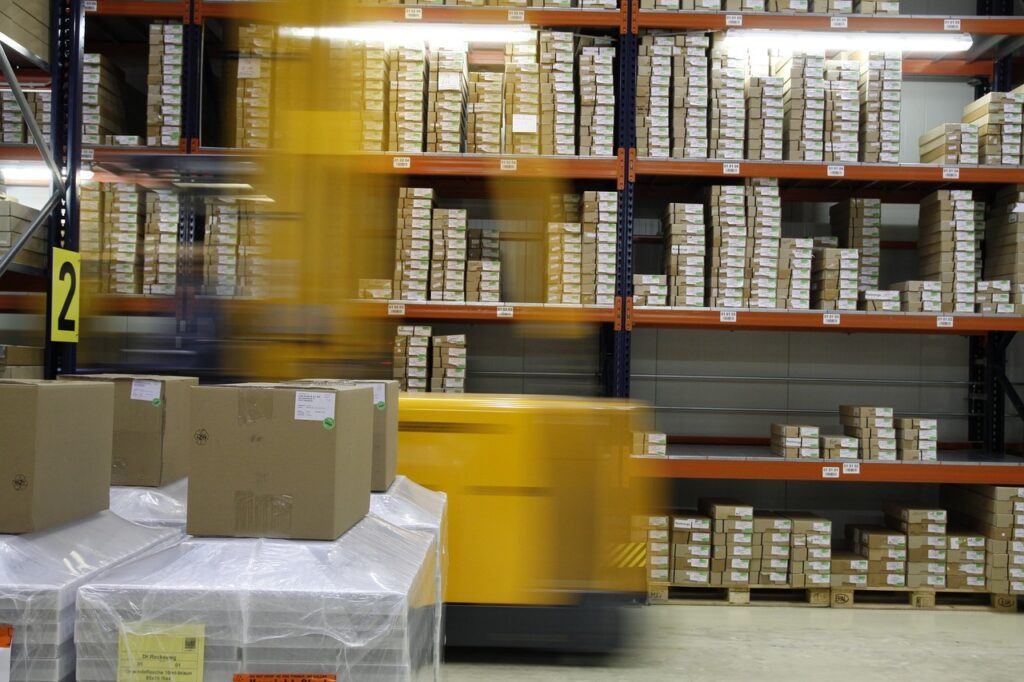What does the future hold for supply chain management? As businesses strive to remain relevant, profitable and future-proof, many are now turning to their supply chains to drive efficiency and become more customer-centric.
These rising expectations certainly turn up the heat for logistics teams across the globe, but the adoption of new technologies and practices will help them rise to the challenge. Read on for 8 trends that are shaping the supply chains of the future.
- A rising emphasis on forecasting to drive resilience and agility COVID-19 caught everyone out.
Some businesses were left with huge inventories of stock that they were unable to sell. Others saw a massive rise in demand and were not equipped to meet it, losing revenue at a time that no one could afford to. While the world is starting to recover from the pandemic, Shopify reports that 67% of consumers now expect two-day delivery or less, maintaining pressure on back-end systems and processes to ensure supply chains can cope. That in mind, the focus has turned to forecasting and how businesses can improve in this area to become more agile and resilient. We expect to see artificial intelligence playing a significant role in helping business make sense of this data, and reap the rewards of greater insight.
- The increasing use of automation
We’re seeing more and more examples of automation in society, with cost often the driving factor. Forward-thinking businesses want their staff to be solving problems rather than completing mundane, repetitive tasks that could be done at a fraction of the cost by a system or machine. In fact, a report by the World Economic Forum expects over 50% of workplace tasks to be completed by machines by 2025 (currently 42%) while Amazon expects to be implementing fully automated warehouses in under a decade. Consumer deliver specialist Hermes are investing heavily in this element on their supply chain, combining automation with added capacity in the UK to process an additional 280,000 parcels annually. Robot Process Automation (RPA) will be a big trend to watch out for in this space during 2022. It simplifies the process of programming software robots to emulate human actions and will be key in developing a deeper understanding and more effective use of data
- Extended adoption of IoT
Internet of Things (IoT) devices connect everyday objects to the internet, providing a valuable, real-time data stream ranging from the temperature of food products in transit, to the physical location of vehicles within a fleet. This trend follows the principle that the more you know about what’s happening in your business, the more informed decisions you can make. A recent survey by GT Nexus and Capgemini, revealed that 70% of retail and manufacturing companies have already begun digital transformation projects, with IoT-based end-to-end insight a key goal of these initiatives. Lower costs are making this technology accessible to a much wider market now, and we’ll no doubt see an increasing number of use cases as a result. Smart shipments, connected assets and IoT for facilities will be three big trends to watch out for in this space

- Omnichannel-ready supply chains
If omnichannel isn’t the norm yet, it’s certainly the expectation from consumers. Customers want to have their cake and eat it – enjoying lightning fast delivery and excellent customer service – and with same-day delivery services like Amazon Prime setting the bar in recent years, they can. So the rush is now on for others retailers to catch up. McKinsey notes the vast challenges for traditional brick-and-mortar retailers trying to raise their e-commerce game:
• The ability for customers to order 24/7 means demand is less predictable
• Order sizes are generally much lower
• There’s an almost constant rise in the number of products offered
All this adds up to an online order’s cost per unit being up to 5 times more than it is for the same product in-store, and up to 10 times higher than it would be wholesale. This growing trend shows no signs of slowing down so businesses need to find solutions quickly.
- End-to-end transparency between suppliers and customers
When we talk about our increasingly connected world, we’re often talking about a new technology advancement, but it’s important to remember the human element too. As businesses take measures to become increasingly aware of their activities, we’ll see them take a broader approach to supply chain management. Over the past decade, pressure from consumers about what goes into the products they purchase has led many organisations to focus on greater visibility over their entire supply chain, but that’s today’s expectation with goals now switching to strengthening relationships with these supply chain networks. Supply chain success will come from those businesses seizing the opportunity to turn this data into actionable insights that provoke new, more efficient ways of working and generate value to the end customer
- The impact of 5G
At the heart of all of these trends is data, and how companies can use their data more effectively to make real-time decisions as well as plan for the future. This increasing reliance on data does come with new challenges though. Namely, that all of it needs to be processed and transferred to make it actionable. With Vodafone indicating that 5G is up to 10 times faster than its predecessor, this sets the foundations in place for businesses to track products and assets even more closely. Better penetration into buildings and lower energy usage are just two amongst a host of benefits to implementing 5G, allowing every part of the supply chain process to be connected. The effective use of 5G-enabled logistics will mean asking the right questions on what needs to be monitored and how often?

- Paperless logistics
Besides the obvious boon to a company’s sustainability measures, going paperless has a range of wider benefits and we’ll see more and more supply chains adopt this way of working. In a process-driven environment, relying on physical copies of everything is not only risky, it’s much less efficient. This often becomes a barrier to growth as businesses take on more customers, not to mention the significant costs in terms of paper, printing and time. Its not all about back-end cost savings though. Paperless supply chains hold exciting possibilities for the world of customer service. When a customer calls to check the status of an order, a digital system ensures this information is just a few clicks away. A huge lift for companies that can get this right. PUMA’s distribution centre in Yorkshire, UK is a fantastic example of this, utilising an automated system to scan all inbound items before automated conveyors and labelling systems ensure a smooth transition to storage.
- The move towards circular supply chains
The push towards circular supply chains is perhaps the largest trend happening now for businesses and governments alike, with ‘green’ measures remaining the driving force behind it. When customers ‘vote with their feet’, they dictate what’s profitable for businesses, and they now expect to see companies taking greater accountability for their impact on the planet. This, combined with government legislation across the globe, means supply chains moving from a linear model to a circular one, where assets are closely monitored and reused by a business. Pallets are an easy example of this. Wooden pallets have been an incredibly popular choice within logistics for years, but short lifetime of these (5-6 journeys) and the limited opportunity for tracking through IoT solutions are key reasons that many businesses are now reconsidering their options. Plastic pallets enhanced by new technology are giving the oversight needed for companies like ASDA and Primark to fully understand their supply chains from start to finish. It won’t be long before others follow suit
Want to find out more?
Logistics is changing rapidly, becoming the new battleground for businesses aiming to increase efficiency and visibility to generate value for their end customers. Putting the right technology in place to monitor supply chains accurately and in real-time will be a key step in this process. At Digipal, we combine leading pallet design with cutting-edge technology to give businesses true visibility over their supply chain and make smart decisions that drive long-term success. If you recognise the need to develop a deeper insight into your supply chain, get in touch today to start the conversation.
Advertisement














